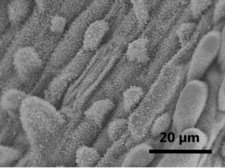
The frequency and severity of floods are expected to increase in some regions during the next decades due to climate change. This phenomenon can result in terrestrial plants and crops becoming temporarily submerged which now occurs more frequently. Some plants, e.g. floating sweet-grass possess hydrophobic leaves that retain a thin layer of air when submerged. This air layer is called a gas film, and the aim of the project is to elucidate how this mechanism enhances oxygen and carbon dioxide exchange with the floodwater under different floodwater conditions. As model plants, I will use birdsfoot trefoil and messina. Submergence experiments will be conducted to assess how the species differ in their ability to retain gas films under water, and studies with microelectrodes will be used to examine how the internal aeration of the plants depends on the gas film retention time.
Project title:
Surviving floods – submergence tolerance of forage legumes
Area of research:
Plant Physiology
Fellowship period:
1 Feb 2018 – 31 Jul 2020
Fellowship type:
AIAS-COFUND Marie Skłodowska-Curie fellow

This fellowship has received funding from the European Union’s Seventh Framework Programme for research, technological development and demonstration under the Marie Skłodowska-Curie grant agreement No 609033 and The Aarhus University Research Foundation.


Scanning Electron Microscopy (SEM) photograph of the surface of a leaf from floating sweet-grass (Glyceria fluitans). The leaf has grooves, papillae and wax crystals, which all contribute to its super-hydrophobicity. Photo: Dennis Konnerup